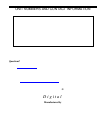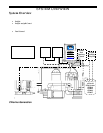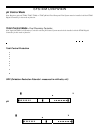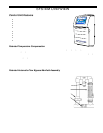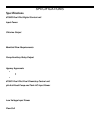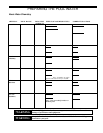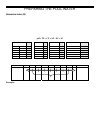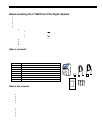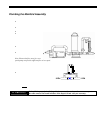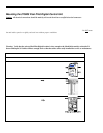
PREPARING THE POOL WATER
5
Calculating Pool Volume (needed to determine proper balance chemical additions)
(
)
2
end shallow ofdepth end deep ofdepth
Depth Average
+
=
Pool Shape Gallons (pool size measured in feet) Liters (pool size measured in meters)
Rectangular Length x Width x Average D e pt h x 7. 5 Length x Wi dth x Average D e pt h x 1 00 0
Round Diameter x Di ameter x Average Depth x 5.9 Diameter x Di ameter x Average Depth x 785
Oval Length x Width x Average Dept h x 5. 9 Lengt h x Width x Avera ge D ept h x 785
Your calculated pool volume is ____________. Enter this number for reference on the information section, pg. iii.
Type of Salt
It is important to use Sodium Chloride (NaCl) salt that is greater than 99% pure. Common types of salt include granular food
grade, water softener pe llets, or so lar salt flakes. These are usually available in 25 lb to 80 lb bags at a local pool or building
supply store. Water softener and solar salt will have a slower dissolve rate than food grade salt. Rock salt and Granular Salt with
Iodine or Rust Preventatives should no t
be used as they contain high levels of impurities that will cause staining.
Note: Granular salt with anti-caking additives such as YPS (Yellow Prussiate of Soda) or Sodium Ferrocyanide can be used but
may cause a localized tint to the water or yellow staining on the pool finish if not mixed and dissolved immediately.
How to Add or Remove Salt
The filter pump should be turned on and run continuously for 24 hours after salt is added to the pool to allow for proper
dissolving and circulation throughout the pool. The filter pump should be run continually for up to 24 hours. The salt should be
added directly to the pool and over the bottom main drain if so equipped. If there is no main drain, a vacuum head can be used to
circulate the salt. Vacuum the salt, brush it around to agitate, or brush into the main drain (if applicable) to speed up the
dissolving process.
Caution:
Do not use a pool cleaner or vacuum head with wheels as they can leave track marks on newly plastered pools.
Do not allow Granular salt to pile up in one location without brushing as staining may occur.
If the salt level in the pool becomes undesirably high, the only way to remove excess salt is to p artially drain the pool and refill
with fresh water.
Salt Level
Your Pool Pilot requires that the size of your pool be entered into the microprocessor so that it can automatically measure the
amount of salt in your pool and indicate how many pounds (kgs) to add when the salt level falls low. To program your pool size,
see “Set Pool Volume” on pg. 34. To calculate the number of gallons (liters) of water in your pool, see Calculating Pool Volume
above. The salt chart on the following page can also be used to calculate how much salt, in pounds (kgs) should be added to reach
the recommend ed level of 3000 ppm (3.0 g/l).
The ideal salt range is 2500 – 3500 PPM (parts per million) (2.5 – 3.5 g/l). However, the Pool Pilot can operate with salt levels in
excess of 35,000 PPM (35.0 g/l), if so desired. High salt levels above 6000 PPM are not normally recommended as this may
cause corrosion to metallic objects such as light fixtures, ladders, handrails, heaters, and pumps. Low salt levels below 2400ppm
will reduce the efficiency of the Pool Pilot and result in low chlorine production. Extremely low salt levels below 1900 ppm will
activate the low salt safety cut-off and h alt chlorine production until salt is replenished to proper salt levels.
The salt is constantly recycled during normal operation. The loss of salt during a swimmin g season should be minimal. Filter
backwashing, draining due to rain water overflow, splashing and bathing suit drag out, and leaks (excessive salt loss in a short
span of time) are typical ways the salt is lost. Salt does not evaporate from the pool when the water evaporates.



